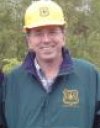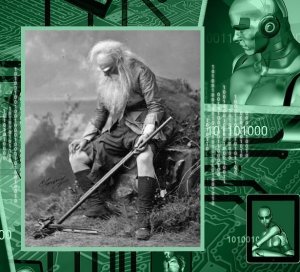
David N. Bengston
Submitted by David N. Bengston on

Actor Joseph Jefferson as Rip Van Winkle
In Washington Irving’s classic short story, Colonial era slacker Rip Van Winkle wanders off into the Catskill Mountains and falls asleep under mysterious circumstances. He awakens twenty years later to a changed world. Most significantly, the British colonies experienced a dramatic political and military revolution during Mr. Van Winkle’s long nap. In place of the portrait of King George III on the sign of ye olde village inn—which is now a hotel—is an image of George Washington. This transformative wild card event would have been unimaginable twenty years earlier.
The story reminds me of a maxim of pioneering futurist, computer scientist, and systems thinker Earl Joseph, who, incidentally, helped inspire my individually designed BS degree in Futures Studies in the 1970s. In Futuring: The Exploration of the Future, Edward Cornish quotes Earl Joseph as saying, “Almost anything can be done in twenty years.” Joseph discussed this idea in a 1974 article in The Futurist magazine.
Cornish gives the examples of the Manhattan Project and the NASA moon landing as extraordinary technological developments that various experts insisted couldn’t be done and yet occurred in only a few years and changed the world. There are countless other examples of surprisingly rapid technological, environmental, social, economic, and political change. Nelson Mandela’s observation about the end of apartheid is relevant here: “It always seems impossible until it’s done.”
That almost anything can be done in twenty years is an important principle for stretching our thinking about the future and considering a broader range of possibilities. Could we cross social and technological tipping points that would begin to reverse the climate crisis in twenty years (Holthaus 2020)? Could intense political polarization turn around (Putnam 2020)? Could a new ecological worldview spread rapidly and create a global ecological civilization (Lent 2021)? Earl Joseph would enthusiastically say yes!
We’re not locked into one future that may seem inevitable today. A lot can be done in twenty years. Almost anything.
References
Cornish, Edward. 2004. Futuring: The Exploration of the Future. Bethesda, MD: World Future Society.
Holthaus, Eric. 2020. The Future Earth: A Radical Vision for What's Possible in the Age of Warming. New York, NY: HarperCollins.
Joseph, Earl. 1974. What is future time? The Futurist 8(4): 178.
Lent, Jeremy. 2021. The Web of Meaning: Integrating Science and Traditional Wisdom to Find our Place in the Universe. Philadelphia, PA: New Society Publishers.
Putnam, Robert D. (with Shaylyn Romney Garrett). 2020. The Upswing: How America Came Together a Century Ago and How We Can Do It Again. New York, NY: Simon & Schuster.
About the Author
David Bengston is an environmental futurist with the Strategic Foresight Group, Northern Research Station, USDA Forest Service, St. Paul, Minnesota. He may be reached at david.bengston@usda.gov.
Images: Actor Joseph Jefferson as Rip Van Winkle, photographed by Napoleon Sarony in 1869. Western History/Genealogy Department, Denver Public Library, Public Domain, via Wikimedia. Background: Gerd Altmann from Pixabay
